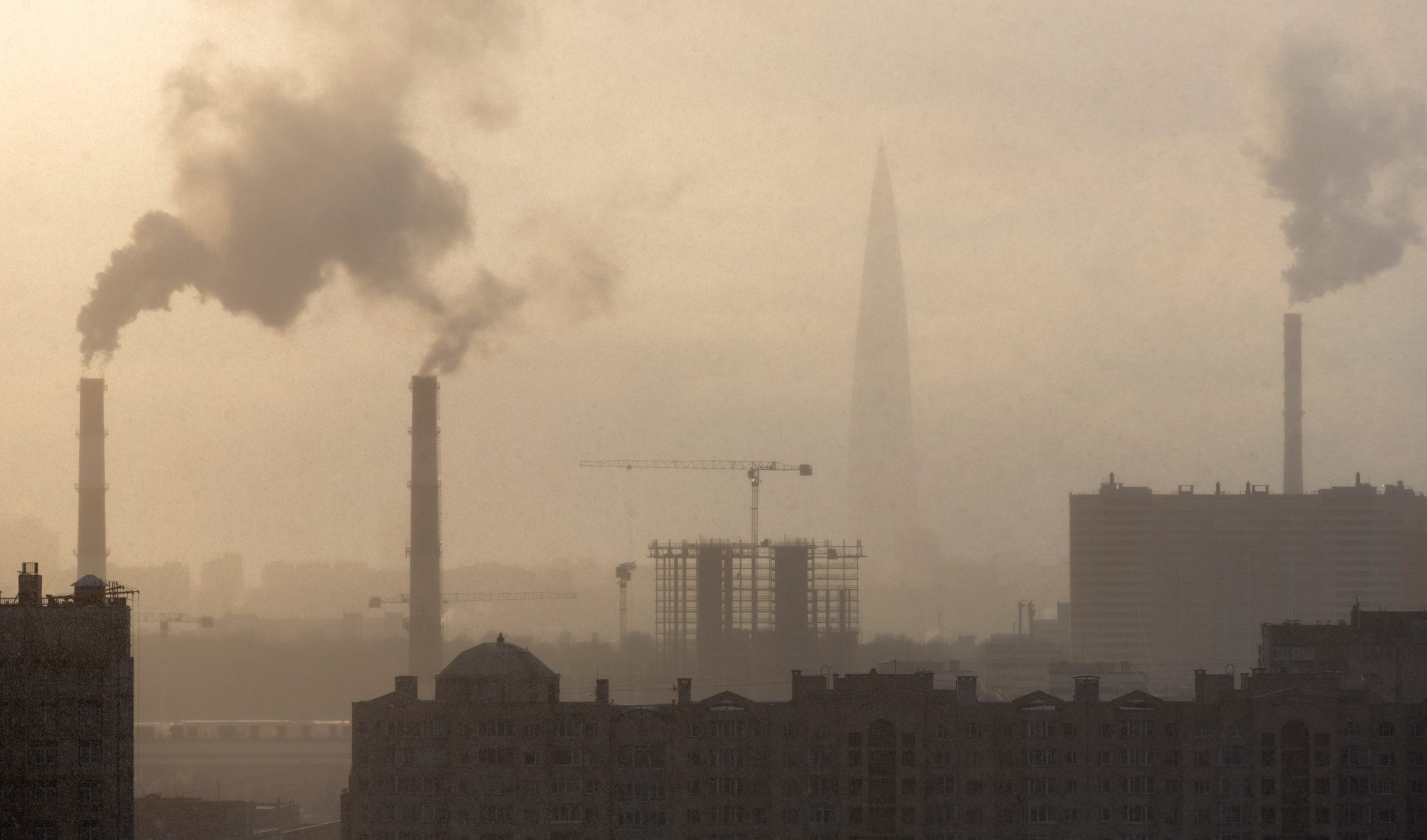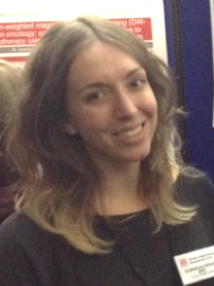
Overview
The Environmental Exposures programme is designed to advance our understanding of the effects of some of the most common environmental pollutants on individual and population health such as the effects of air pollution, non-ionising radiation, and emerging environmental hazards like microplastics.
We recognise the need for improved quality, accuracy and scope of exposure metrics for use in panel and population studies, thereby helping to establish a more robust and targeted link between environmental exposures and a diverse set of health outcomes.
We intend to remain at the forefront of advancements in sensor and remote sensing technologies. We will take advantage of opportunities in crowdsourcing information on individuals’ interactions with the environment such as travel and activity patterns. Reducing exposure misclassification and increasing specificity of exposure metrics are key goals for the next quinquennium. To achieve this we will further develop the London Hybrid Exposure Model (LHEM) to investigate the strong spatial concentration gradients and variability in air pollutants across urban areas. Previous models do not take account of exposures within the home, at work/school and in different travel micro-environments. The LHEM will play a central role in our future research investigating the independent effects of NO2 and PM2.5 on health.
PM metal (both transition and heavy metal) content remains an important interest, making use of the Wellcome-funded metallomics facility. New research has been initiated in dementia and we are investigating the possible deposition of transition metals in human brain tissue in relation to effects on cognitive function.
We are undertaking epidemiological analyses of mobile phone use and cancer and cardiovascular disease incidence, reproductive effects and reported symptoms among the international COSMOS consortium that includes over 300,000 participants in five European countries; and we are analysing cognitive development amongst adolescents in the SCAMP study. These large prospective studies include for the first time robust exposure assessment based on state of the art methods for reducing the error inherent from relying on self-reported mobile phone and radio use.
We are also alert to the potential emergence of new environmental challenges and hazards. One such example is microplastics where we are investigating the toxicological impact of different airborne microplastics in model systems in collaboration with colleagues in the MRC Toxicology Unit at the University of Cambridge.
PM metal (both transition and heavy metal) content remains an important interest, making use of the Wellcome-funded metallomics facility. New research has been initiated in dementia and we are investigating the possible deposition of transition metals in human brain tissue in relation to effects on cognitive function.
We are undertaking epidemiological analyses of mobile phone use and cancer and cardiovascular disease incidence, reproductive effects and reported symptoms among the international COSMOS consortium that includes over 300,000 participants in five European countries; and we are analysing cognitive development amongst adolescents in the SCAMP study. These large prospective studies include for the first time robust exposure assessment based on state of the art methods for reducing the error inherent from relying on self-reported mobile phone and radio use.
We are also alert to the potential emergence of new environmental challenges and hazards. One such example is microplastics where we are investigating the toxicological impact of different airborne microplastics in model systems in collaboration with colleagues in the MRC Toxicology Unit at the University of Cambridge.
Theme Lead
Prof. Frank Kelly FIEnvSc FRCP (Hons)

Humphrey Battcock Chair in Community Health and Policy
Deputy Director of MRC Centre & Programme Lead: Environmental Exposures
Environmental Research Group, School of Public Health
View papers for Professor Frank Kelly
MRC Centre Themes:
Environmental Exposures – Programme Lead
Healthy Cities, Healthy People
Research areas:
Principal Team
Dr Benjamin Barratt

Reader in Environmental Exposures & Public Health
Environmental Research Group, School of Public Health
View papers for Dr Benjamin Barratt
MRC Centre Themes:
Environmental Exposures
Healthy Cities, Healthy People
Research areas:
Dr Leon Barron

Reader in Analytical & Environmental Science
Environmental Research Group, School of Public Health
View papers for Dr Leon Barron
MRC Centre Themes:
Environmental Exposures
Molecular Signatures and Disease Pathways
Research areas:
Dr Sean Beevers

Reader in Atmospheric Modelling
Environmental Research Group, School of Public Health
View papers for Dr Sean Beevers
MRC Centre Themes:
Environmental Exposures
Healthy Cities, Healthy People
Research areas:
Prof. Klea Katsouyanni

Professor of Public Health
Environmental Research Group, School of Public Health
View papers for Dr Klea Katsouyanni
MRC Centre Themes:
Environmental Exposures
Cohorts and Data Resources
Research areas:
Dr Gary Fuller

Senior Lecturer in Air Quality Measurement
Environmental Research Group, School of Public Health
View papers for Dr Gary Fuller
MRC Centre Themes:
Environmental Exposures
Healthy Cities, Healthy People
Research areas:
Dr David Green

Senior Research Fellow
Environmental Research Group, School of Public Health
View papers for Dr David Green
MRC Centre Themes:
Environmental Exposures
Healthy Cities, Healthy People
Research areas:
Dr Ian Mudway

Senior Lecturer in Respiratory Toxicology
MRC Centre PCIEP Coordinator
MRC Centre PPI/PPE Coordinator
Environmental Research Group, School of Public Health
View papers for Dr Ian Mudway
MRC Centre Themes:
Environmental Exposures
Molecular Signatures and Disease Pathways
Research areas:
Dr Heather Walton

Senior Lecturer in Environmental Health
Environmental Research Group, School of Public Health
View papers for Dr Heather Walton
Dr Stephanie Wright

Lecturer in Environmental Toxicology
Joint Training Programme Deputy Director
Environmental Research Group, School of Public Health
View papers for Dr Stephanie Wright
MRC Centre Themes:
Environmental Exposures
Molecular Signatures and Disease Pathways
Research areas:
Dr Diana Varaden

Lecturer in Environmental Social Science and Health
Environmental Research Group, School of Public Health
View papers for Dr Diana Varaden
MRC Centre Themes:
Air pollution & health
Healthy Cities, Healthy People
Research areas:
Associated Team
Prof. Paul Elliott

MRC Centre Director
Professor of Epidemiology and Public Health Medicine
Director MRC Centre
Dept. of Epidemiology and Biostatistics, School of Public Health
View papers for Professor Paul Elliott
MRC Centre Themes:
Molecular Signatures and Disease Pathways
Cohorts and Data Resources
Research areas:
Prof. Marta Blangiardo

Professor of Biostatistics
Theme Lead: Biostatistics and Data Science
Dept. of Epidemiology and Biostatistics, School of Public Health
View papers for Professor Marta Blangiardo
MRC Centre Themes:
Biostatistics and Data Science – Theme Lead
Cohorts and Data Resources
Molecular Signatures and Disease Pathways
Research areas:
Prof. Majid Ezzati

Professor of Global Environmental Health
Programme Lead: Healthy Cities, Healthy People
Dept. of Epidemiology and Biostatistics, School of Public Health
View papers for Professor Majid Ezzati
Category:
Prof. Edward W Gregg

Chair in Diabetes and Cardiovascular Disease Epidemiology
Dept. of Epidemiology and Biostatistics, School of Public Health
View papers for Professor Edward W Gregg
Category:
Prof. Debbie Jarvis

Professor in Public Health
Theme Lead: Cohorts and Data Resources
National Heart and Lung Institute
View papers for Professor Debbie Jarvis
Category:
Prof. Jennifer Quint

Professor of Respiratory Epidemiology
National Heart and Lung Institute
View papers for Professor Jenni Quint
MRC Centre Themes:
Cohorts and Data Resources
Environmental Exposures
Research areas:
Dr Chloe Bloom

Senior Clinical Research Fellow
National Heart and Lung Institute
View papers for Dr Chloe Bloom
MRC Centre Themes:
Cohorts and Data Resources
Environmental Exposures
Research areas:
Dr Monica Pirani

Lecturer in Biostatistics
Dept. of Epidemiology and Biostatistics, School of Public Health
View papers for Dr Monica Pirani
MRC Centre Themes:
Biostatistics and Data Science
Cohorts and Data Resources
Research areas:
Key Projects
• Precise Dyad - The primary aim of the PRECISE DYAD project is to determine pathways to healthy outcomes for mothers and their children in Sub-Saharan Africa following both normal and complicated pregnancies. The Air quality study within PRECISE DYAD will utilise air quality measurements from Mozambique, Kenya, and the Gambia to characterise personal pollution exposures, and their sources, for direct linkage to ill-health outcome endpoints related to the placenta. Through the deep phenotyping design of the PRECISE cohort, the study will assess the impact of behavioural, geographic, and seasonality of effects in contrasting spatial settings.
• AIRLESS is a UK-China collaborative project funded by NERC, MRC, and the National Natural Science Foundation of China (NSFC). In close collaboration with Chinese scientists, we have successfully recruited 250 participants who completed 940 follow-up clinical visits during the winter of 2016 and summer of 2017 in urban and peri-urban Beijing, China. The project employed state-of-the-art, validated sensor technologies to comprehensively assess the outdoor, indoor, and personal exposure levels to various gaseous pollutants and particulate matter. To gain insights into the acute effects of air pollution on the respiratory and cardiometabolic systems, an extensive array of health outcomes and biomarkers were measured. Our findings highlight substantially higher PM2.5 concentrations in peri-urban than urban areas of Beijing across ambient, personal, and indoor settings. Additionally, notable seasonal variations in air pollution levels were observed. Personal exposure to PM2.5 exhibited significant associations with increased respiratory and systemic inflammatory biomarkers. Ongoing analyses are focused on investigating changes in cardiometabolic biomarkers.
• CAPPA aims to describe the burden of personal air pollution exposure in urban children with asthma symptoms in sub-Saharan Africa, its geographic, and temporal variability, the role of transport, indoor and outdoor microenvironments and activity profiles, and the effect of socioeconomic variables. We will also explore connections between air pollution exposure and lung health in these children. Personal air pollution monitoring will be carried out by school children in urban settings using backpacks equipped with monitoring devices, developed and provided by Dyson Ltd.
• We developed state-of-the-art high-throughput analytical laboratories and methods for trace monitoring and risk assessment of thousands of chemical pollutants in wastewater, river water and drinking water. As part of this, we partnered with national and international industry partners, agencies and academics to deliver critical datasets to improve understanding of chemical use and exposure. For example, we most recently delivered high throughput monitoring data as part of the Thames Water Smarter Water Catchments programme to better understand and improve the contamination levels of chemicals in chalk streams across the south of England. We also conducted the most extensive survey of chemical pollution from wastewater sources across the SARS-CoV-2 pandemic in any major global capital city (London) arising from continuous and combined sewer overflows. These data then underpinned the identification of neonicotinoid pesticides as an urban environmental concern in a Policy Note published with the Grantham Institute.
• We conducted one of the first studies globally using non-targeted analysis of drinking water to understand potential human exposure to thousands of organic acid chemical residues such as perfluoro and perfluoroalkyl compounds (so called ‘forever chemicals’) and novel disinfectant by-products to help prioritisation strategies.
• Our air pollution modelling [1] helped develop the London Environment Strategy which includes the Ultra-Low Emissions Zone (uLEZ) policy, in collaboration with the Greater London Authority, with the aim of reducing air pollution in London.
• We developed a fine-scale outdoor air pollution exposure model for the UK (CMAQ-urban) whose estimates (for NOX, NO2 and O3) have been used to i) characterize effects on children’s respiratory health [2], birth weight [3], psychotic experiences in teenagers [4] and forecast public health impacts of climate policies to 2050 [5].
• Overseas our research demonstrated associations between daily air quality and hospitalisations for acute exacerbation of chronic obstructive pulmonary disease in Beijing [6]. We reported on air quality changes after Hong Kong shipping emission policy was introduced [7] and we undertook vertical monitoring of traffic-related air pollution (TRAP) in urban street canyons of Hong Kong [8] and examined the associated between long term exposure to air pollution and mortality in an elderly cohort in Hong Kong [9].
• We undertook a Systematic Review on Air Pollution and Dementia [10] and we examined the potential of omics approaches to elucidate mechanisms of biodiesel-induced pulmonary toxicity [11].
• We have examined the deposition rate of atmospheric microplastic deposition in an urban environment and evaluated its transport [12] and we have used Raman Spectral Imaging for the Detection of Inhalable Microplastics in Ambient Particulate Matter Samples [13].
• We have examined the relationships between airborne pollutants, serum albumin adducts and short-term health outcomes in an experimental crossover study [14], we examined the source apportionment of particle number size distribution in urban background and traffic stations in four European cities [15] we quantified the concentration of PM2.5 on the London Underground [16] and we established the mineralogy, geochemistry and oxidative potential of size-segregated respirable deposited dust in underground coal mines [17].
• We established the MRC-funded COPE panel study, carrying out detailed measurements of personal exposure and lung function among 120 COPD patients in London [18]. Similar measurement techniques have been used to support other panel studies in the Centre, including the Oxford Street II study [19] and EXPOsOMICS where personal measurements were linked to omic signatures in blood [20].
• AIRLESS is a UK-China collaborative project funded by NERC, MRC, and the National Natural Science Foundation of China (NSFC). In close collaboration with Chinese scientists, we have successfully recruited 250 participants who completed 940 follow-up clinical visits during the winter of 2016 and summer of 2017 in urban and peri-urban Beijing, China. The project employed state-of-the-art, validated sensor technologies to comprehensively assess the outdoor, indoor, and personal exposure levels to various gaseous pollutants and particulate matter. To gain insights into the acute effects of air pollution on the respiratory and cardiometabolic systems, an extensive array of health outcomes and biomarkers were measured. Our findings highlight substantially higher PM2.5 concentrations in peri-urban than urban areas of Beijing across ambient, personal, and indoor settings. Additionally, notable seasonal variations in air pollution levels were observed. Personal exposure to PM2.5 exhibited significant associations with increased respiratory and systemic inflammatory biomarkers. Ongoing analyses are focused on investigating changes in cardiometabolic biomarkers.
• CAPPA aims to describe the burden of personal air pollution exposure in urban children with asthma symptoms in sub-Saharan Africa, its geographic, and temporal variability, the role of transport, indoor and outdoor microenvironments and activity profiles, and the effect of socioeconomic variables. We will also explore connections between air pollution exposure and lung health in these children. Personal air pollution monitoring will be carried out by school children in urban settings using backpacks equipped with monitoring devices, developed and provided by Dyson Ltd.
• We developed state-of-the-art high-throughput analytical laboratories and methods for trace monitoring and risk assessment of thousands of chemical pollutants in wastewater, river water and drinking water. As part of this, we partnered with national and international industry partners, agencies and academics to deliver critical datasets to improve understanding of chemical use and exposure. For example, we most recently delivered high throughput monitoring data as part of the Thames Water Smarter Water Catchments programme to better understand and improve the contamination levels of chemicals in chalk streams across the south of England. We also conducted the most extensive survey of chemical pollution from wastewater sources across the SARS-CoV-2 pandemic in any major global capital city (London) arising from continuous and combined sewer overflows. These data then underpinned the identification of neonicotinoid pesticides as an urban environmental concern in a Policy Note published with the Grantham Institute.
• We conducted one of the first studies globally using non-targeted analysis of drinking water to understand potential human exposure to thousands of organic acid chemical residues such as perfluoro and perfluoroalkyl compounds (so called ‘forever chemicals’) and novel disinfectant by-products to help prioritisation strategies.
• Our air pollution modelling [1] helped develop the London Environment Strategy which includes the Ultra-Low Emissions Zone (uLEZ) policy, in collaboration with the Greater London Authority, with the aim of reducing air pollution in London.
• We developed a fine-scale outdoor air pollution exposure model for the UK (CMAQ-urban) whose estimates (for NOX, NO2 and O3) have been used to i) characterize effects on children’s respiratory health [2], birth weight [3], psychotic experiences in teenagers [4] and forecast public health impacts of climate policies to 2050 [5].
• Overseas our research demonstrated associations between daily air quality and hospitalisations for acute exacerbation of chronic obstructive pulmonary disease in Beijing [6]. We reported on air quality changes after Hong Kong shipping emission policy was introduced [7] and we undertook vertical monitoring of traffic-related air pollution (TRAP) in urban street canyons of Hong Kong [8] and examined the associated between long term exposure to air pollution and mortality in an elderly cohort in Hong Kong [9].
• We undertook a Systematic Review on Air Pollution and Dementia [10] and we examined the potential of omics approaches to elucidate mechanisms of biodiesel-induced pulmonary toxicity [11].
• We have examined the deposition rate of atmospheric microplastic deposition in an urban environment and evaluated its transport [12] and we have used Raman Spectral Imaging for the Detection of Inhalable Microplastics in Ambient Particulate Matter Samples [13].
• We have examined the relationships between airborne pollutants, serum albumin adducts and short-term health outcomes in an experimental crossover study [14], we examined the source apportionment of particle number size distribution in urban background and traffic stations in four European cities [15] we quantified the concentration of PM2.5 on the London Underground [16] and we established the mineralogy, geochemistry and oxidative potential of size-segregated respirable deposited dust in underground coal mines [17].
• We established the MRC-funded COPE panel study, carrying out detailed measurements of personal exposure and lung function among 120 COPD patients in London [18]. Similar measurement techniques have been used to support other panel studies in the Centre, including the Oxford Street II study [19] and EXPOsOMICS where personal measurements were linked to omic signatures in blood [20].
•Lim, Shannon., et al. 2023. Characterising Sources of PM 2.5 Exposure for School Children with Asthma in Six Sub-Saharan African Cities. 2023 (preprints) doi: 10.2139/ssrn.4453381
•Zhang, H., Fan. Y., Han, Y., Yean, L., Zhou, B., Chen, W., Cai, Y., Cham, Q., Zhu, T., Kelly, F.J., Barratt, B . Partitioning PM2.5 of indoor and outdoor origin from in urban and peri-urban Beijing. Sci. Total Environ., (2002) 845, p.157249. doi: 10.1016/j.scitotenv.2022.157249.
•Han, Y., Chatzidiakou, L., Yan, L., Chen. W., Zhang, H., Krause, A., Xue, T., Chan, Q., Liu, J., Wu, Y., Barratt, B., Jones, R., Zhu, T., Kelly, F.J. Difference in ambient-personal exposure to PM2.5 and its inflammatory effect in local residents in Beijing, China. Faraday Discuss. (2021) 226, pp.569-583. doi: 10.1039/D0FD00097C
•Han, Y., Chen, W., Chatzidiakou, L., Krause, A., Yan, L., Zhang, H., Chan, Q., Barratt, B., Jones, R., Liu, J., Wu, Y., Zhao, M., Zhang, J., Kelly, F. J., Zhu, T., and the AIRLESS team: Effects of AIR pollution on cardiopulmonary disease in urban and peri-urban residents in Beijing: protocol for the AIRLESS study, Atmos. Chem. Phys., 20, 15775–15792 (2020), doi: 10.5194/acp-20-15775-2020
•Chatzidiakou, L., Krause, A., Popoola, O. A. M., Di Antonio, A., Kellaway, M., Han, Y., Squires, F. A., Wang, T., Zhang, H., Wang, Q., Fan, Y., Chen, S., Hu, M., Quint, J. K., Barratt, B., Kelly, F. J., Zhu, T., and Jones, R. L.: Characterising low-cost sensors in highly portable platforms to quantify personal exposure in diverse environments, Atmos. Meas. Tech., 12, 4643–4657 (2019). doi: 10.5194/amt-12-4643-2019
•Preston-Allen, R.G.G., Albini, D., Barron, L., Collins, T., Dumbrell, A., Duncalf-Youngson, H., Jackson, M., Johnson, A., Perkins, R., Prentis, A., Spurgeon, D., Stasik, N., Wells, C. and Woodward, G. (2023). Are urban areas hotspots for pollution from pet parasiticides? Grantham Institute Briefing note #15. DOI: https://doi.org/10.25561/102699
• Ciccarelli, D., Christopher Braddock, D., Surman, A.J., Arenas, B.I.V., Salal, T., Marczylo, T., Vineis, P., Barron, L.P. Enhanced selectivity for acidic contaminants in drinking water: From suspect screening to toxicity prediction (2023) Journal of Hazardous Materials, 448, art. no. 130906. DOI: 10.1016/j.jhazmat.2023.130906
• Rapp-Wright, H., Regan, F., White, B., Barron, L.P. A year-long study of the occurrence and risk of over 140 contaminants of emerging concern in wastewater influent, effluent and receiving waters in the Republic of Ireland (2023) Science of the Total Environment, 860, art. no. 160379. DOI: 10.1016/j.scitotenv.2022.160379
• Adhikari, S., Kumar, R., Driver, E.M., Bowes, D.A., Ng, K.T., Sosa-Hernandez, J.E., Oyervides-Muñoz, M.A., Melchor-Martínez, E.M., Martínez-Ruiz, M., Coronado-Apodaca, K.G., Smith, T., Bhatnagar, A., Piper, B.J., McCall, K.L., Parra-Saldivar, R., Barron, L.P., Halden, R.U. Occurrence of Z-drugs, benzodiazepines, and ketamine in wastewater in the United States and Mexico during the Covid-19 pandemic (2023) Science of the Total Environment, 857, art. no. 159351. DOI: 10.1016/j.scitotenv.2022.159351
• Richardson, A.K., Irlam, R.C., Wright, H.R., Mills, G.A., Fones, G.R., Stürzenbaum, S.R., Cowan, D.A., Neep, D.J., Barron, L.P. A miniaturized passive sampling-based workflow for monitoring chemicals of emerging concern in water(2022) Science of the Total Environment, 839, art. no. 156260 DOI: 10.1016/j.scitotenv.2022.156260
• Liu S, Lim YH, Chen J, Strak M, Wolf K, Weinmayr G, Rodopolou S, de Hoogh K, Bellander T, Brandt J, Concin H, Zitt E, Fecht D, Forastiere F, Gulliver J, Hertel O, Hoffmann B, Hvidtfeldt UA, Verschuren WMM, Jöckel KH, Jørgensen JT, So R, Amini H, Cole-Hunter T, Mehta AJ, Mortensen LH, Ketzel M, Lager A, Leander K, Ljungman P, Severi G, Boutron-Ruault MC, Magnusson PKE, Nagel G, Pershagen G, Peters A, Raaschou-Nielsen O, Rizzuto D, van der Schouw YT, Schramm S, Sørensen M, Stafoggia M, Tjønneland A, Katsouyanni K, Huang W, Samoli E, Brunekreef B, Hoek G, Andersen ZJ. Long-term air pollution exposure and pneumonia-related mortality in a large pooled European cohort. Am J Respir Crit Care Med 2022;205(12):1429-39. DOI:10.1164/rccm.202106-1484OC
• Konstantinoudis G, Minelli C, Vicedo-Cabrera AM, Ballester J, Gasparrini A, Blangiardo M. Ambient heat exposure and COPD hospitalisations in England: A nationwide case-crossover study during 2007-2018. Thorax 2022;77(11):1098-104. DOI: 10.1136/thoraxjnl-2021-218374
• Nematollahi, MJ, Zarei F, Keshavarzi B, Zarei M, Moore F, Busquets R, Kelly FJ. Microplastic occurrence in settled indoor dust in schools. Sci Total Environ 2022;807. DOI: 10.1016/j.scitotenv.2021.150984
• Egli, M., Hartmann, A., Wright, H.R., Ng, K.T., Piel, F.B., Barron, L.P. Quantitative determination and environmental risk assessment of 102 chemicals of emerging concern in wastewater-impacted rivers using rapid direct-injection liquid chromatography—tandem mass spectrometry(2021) Molecules, 26 (18), art. no. 5431 DOI: 10.3390/molecules26185431
•Ng, K.T., Rapp-Wright, H., Egli, M., Hartmann, A., Steele, J.C., Sosa-Hernández, J.E., Melchor-Martínez, E.M., Jacobs, M., White, B., Regan, F., Parra-Saldivar, R., Couchman, L., Halden, R.U., Barron, L.P. High-throughput multi-residue quantification of contaminants of emerging concern in wastewaters enabled using direct injection liquid chromatography-tandem mass spectrometry(2020) Journal of Hazardous Materials, 398, art. no. 122933 DOI: 10.1016/j.jhazmat.2020.122933
• Smith J.D., Mitsakou C., Kitwiroon N., Barratt B.M., Walton H.A., Taylor J.G., Anderson H.R., Kelly F.J., Beevers S.D. London Hybrid Exposure Model: Improving Human Exposure Estimates to NO2 and PM2.5 in an Urban Setting. Environmental Science and Technology. 50: 11760-78, 2016 DOI: 10.1021/acs.est.6b01817
• Mudway IS, Dundas I, Wood HE, Marlin N, Jamaludin JB, Bremner SA, Cross L, Grieve A, Nanzer A, Barratt BM, Beevers S, Dajnak D, Fuller GW, Font A, Colligan G, Sheikh A, Walton R, Grigg J, Kelly FJ, Lee TH, Griffiths CJ. Impact of London's low emission zone on air quality and children's respiratory health: a sequential annual cross-sectional study. Lancet Public Health. 2019 Jan;4(1):e28-e40. DOI: 10.1016/s2468-2667(18)30202-0
• Smith RB, Fecht D, Gulliver J, Beevers SD, Dajnak D, Blangiardo M, Ghosh RE, Hansell AL, Kelly FJ, Anderson HR, Toledano MB. Impact of London's road traffic air and noise pollution on birth weight: retrospective population based cohort study. BMJ 2017 Dec 5;359:j5299. DOI: 10.1136/bmj.j5299
• Newbury JB, Arseneault L, Beevers S, Kitwiroon N, Roberts S, Pariante CM, Kelly FJ, Fisher HL. Association of Air Pollution Exposure With Psychotic Experiences During Adolescence. JAMA Psychiatry 2019 Jun 1;76(6):614-623. DOI: 10.1001/jamapsychiatry.2019.0056
• The Lancet Countdown on health benefits from the UK Climate Change Act: a modelling study for Great Britain. Williams ML, Lott MC, Kitwiroon N, Dajnak D, Walton H, Holland M, Pye S, Fecht D, Toledano MB, Beevers SD. Lancet Planet Health. 2018 May;2(5):e202-e213. DOI: 10.1016/s2542-5196(18)30067-6
• Lirong Liang, Yutong Cai, Benjamin Barratt, Baolei Lyu, Queenie Chan, Anna L Hansell, Wuxiang Xie, Di Zhang, Frank J Kelly, Zhaohui Tong (2019). Associations between daily air quality and hospitalisations for acute exacerbation of chronic obstructive pulmonary disease in Beijing, 2013-17: an ecological analysis. The Lancet. Planetary Health 3(6):270-279. DOI: 10.1016/s2542-5196(19)30085-3
• Tonya G. Mason, King Pan Chan, C. Mary Schooling, Shengzhi Sun, Aimin Yang, Yang Yang, Benjamin Barratt, Linwei Tian (2019). Air quality changes after Hong Kong shipping emission policy: An accountability study. Chemosphere. 226:616-624 DOI: 10.1016/j.chemosphere.2019.03.173
• Wong, P. P. Y., Lai, P-C., Allen, R., Cheng, W., Lee, M., Tang, R., Thach, T-Q., TIan, L., Brauer, M. & Barratt, B. (2019). Vertical monitoring of traffic-related air pollution (TRAP) in urban street canyons of Hong Kong. STOTEN. 670, 696-703. DOI: 10.1016/j.scitotenv.2019.03.224
• Long term exposure to air pollution and mortality in an elderly cohort in Hong Kong. Yang Y, Tang R, Qiu H, Lai PC, Wong P, Thach TQ, Allen R, Brauer M, Tian L, Barratt B. Environ Int. 2018 Aug;117:99-106. DOI: .org/10.1016/j.scitotenv.2019.03.224
• Peters R, Ee N, Peters J, Booth A, Mudway I, Anstey KJ. Air Pollution and Dementia: A Systematic Review. J Alzheimers Dis. 2019;70(s1):S145-S163. DOI: 10.1016/j.scitotenv.2019.03.224
• Selley L, Phillips DH, Mudway I. The potential of omics approaches to elucidate mechanisms of biodiesel-induced pulmonary toxicity. Part Fibre Toxicol. 2019;16(1):4. DOI: 10.1016/j.scitotenv.2019.03.224
• Wright S, Uke J, Font A, Chan KLA, and FJ Kelly. Atmospheric microplastic deposition in an urban environment and an evaluation of transport. Environment International 136: 105411, 2020DOI: 10.1016/j.envint.2019.105411
• Wright S, Livermore J, Kelly FJ. Raman Spectral Imaging for the Detection of Inhalable Microplastics in Ambient Particulate Matter Samples. Environmental Science & Technology 53: 8947−8956, 2019DOI: 10.1016/j.scitotenv.2019.03.224
• George W Preston, Sonia Dagnino, Erica Ponzi, Osman Sozeri, Karin van Veldhoven, Benjamin Barratt, Sa Liu, Hasmik Grigoryan, Sixin S Lu, Stephen M Rappaport, Kian Fan Chung, Paul Cullinan, Rudy Sinharay, Frank J. Kelly, Marc Chadeau-Hyam, Paolo Vineis, David H Phillips. Relationships between airborne pollutants, serum albumin adducts and short-term health outcomes in an experimental crossover study. Chemosphere 239: 124667, 2020 DOI: 10.1016/j.scitotenv.2019.03.224
• Ioar Rivas, David C.S. Beddows, Fulvio Amato, David Green, Leena Jarvi, Christoph Hueglin, Cristina Reche, Hilkka Timonen, Gary Fuller, Jarkko V. Niemi, Noemi Perez, Minna Aurela, Philip Hopke, Andres Alastuey, Markku Kulmala, Roy Harrison, Xavier Querol, Frank J. Kelly. Source apportionment of particle number size distribution in urban background and traffic stations in four European cities. Environment International 135: 105345, 2020 DOI: 10.1016/j.envint.2019.105345
• Smith, James, Barratt, Benjamin, Fuller, Gary, Kelly, Frank J, Loxham, Matthew, Nicolosi, Eleonora, Priestman, Max, Tremper, Anja and Green, David. PM2.5 on the London Underground. Environment International. 134: 105188, 2020 DOI: 10.1016/j.envint.2019.105188
• Pedro Trechera, Teresa Moreno, Patricia Córdoba, Natalia Moreno, Xinguo Zhuang, Baoqing Li, Jing Li, Yunfei Shangguan, Konrad Kandler, Ana Oliete Dominguez, Frank Kelly, Xavier Querol. Mineralogy, geochemistry and oxidative potential of size-segregated respirable deposited dust in underground coal mines. Journal of Hazardous Materials 122935 2020 DOI: 10.1016/j.jhazmat.2020.122935
• Linking e-health records, patient-reported symptoms and environmental exposure data to characterise and model COPD exacerbations: protocol for the COPE study. Moore E, Chatzidiakou L, Jones RL, Smeeth L, Beevers S, Kelly FJ, K Quint J, Barratt B. BMJ Open. 2016 Jul 13;6(7):e011330 DOI: 10.1136/bmjopen-2016-011330
• Respiratory and cardiovascular responses to walking down a traffic-polluted road compared with walking in a traffic-free area in participants aged 60 years and older with chronic lung or heart disease and age-matched healthy controls: a randomised, crossover study. Sinharay R, Gong J, Barratt B, Ohman-Strickland P, Ernst S, Kelly FJ, Zhang JJ, Collins P, Cullinan P, Chung KF. Lancet. 2018 Jan 27;391(10118):339-349 Erratum in: Lancet. 2018 Jan 27;391(10118):308. DOI: 10.1016/s0140-6736(17)32643-0
• The human circulating miRNome reflects multiple organ disease risks in association with short-term exposure to traffic-related air pollution. Krauskopf J, Caiment F, van Veldhoven K, Chadeau-Hyam M, Sinharay R, Chung KF, Cullinan P, Collins P, Barratt B, Kelly FJ, Vermeulen R, Vineis P, de Kok TM, Kleinjans JC. Environ Int. 2018;113:26-34. DOI:10.1016/j.envint.2018.01.014
•Zhang, H., Fan. Y., Han, Y., Yean, L., Zhou, B., Chen, W., Cai, Y., Cham, Q., Zhu, T., Kelly, F.J., Barratt, B . Partitioning PM2.5 of indoor and outdoor origin from in urban and peri-urban Beijing. Sci. Total Environ., (2002) 845, p.157249. doi: 10.1016/j.scitotenv.2022.157249.
•Han, Y., Chatzidiakou, L., Yan, L., Chen. W., Zhang, H., Krause, A., Xue, T., Chan, Q., Liu, J., Wu, Y., Barratt, B., Jones, R., Zhu, T., Kelly, F.J. Difference in ambient-personal exposure to PM2.5 and its inflammatory effect in local residents in Beijing, China. Faraday Discuss. (2021) 226, pp.569-583. doi: 10.1039/D0FD00097C
•Han, Y., Chen, W., Chatzidiakou, L., Krause, A., Yan, L., Zhang, H., Chan, Q., Barratt, B., Jones, R., Liu, J., Wu, Y., Zhao, M., Zhang, J., Kelly, F. J., Zhu, T., and the AIRLESS team: Effects of AIR pollution on cardiopulmonary disease in urban and peri-urban residents in Beijing: protocol for the AIRLESS study, Atmos. Chem. Phys., 20, 15775–15792 (2020), doi: 10.5194/acp-20-15775-2020
•Chatzidiakou, L., Krause, A., Popoola, O. A. M., Di Antonio, A., Kellaway, M., Han, Y., Squires, F. A., Wang, T., Zhang, H., Wang, Q., Fan, Y., Chen, S., Hu, M., Quint, J. K., Barratt, B., Kelly, F. J., Zhu, T., and Jones, R. L.: Characterising low-cost sensors in highly portable platforms to quantify personal exposure in diverse environments, Atmos. Meas. Tech., 12, 4643–4657 (2019). doi: 10.5194/amt-12-4643-2019
•Preston-Allen, R.G.G., Albini, D., Barron, L., Collins, T., Dumbrell, A., Duncalf-Youngson, H., Jackson, M., Johnson, A., Perkins, R., Prentis, A., Spurgeon, D., Stasik, N., Wells, C. and Woodward, G. (2023). Are urban areas hotspots for pollution from pet parasiticides? Grantham Institute Briefing note #15. DOI: https://doi.org/10.25561/102699
• Ciccarelli, D., Christopher Braddock, D., Surman, A.J., Arenas, B.I.V., Salal, T., Marczylo, T., Vineis, P., Barron, L.P. Enhanced selectivity for acidic contaminants in drinking water: From suspect screening to toxicity prediction (2023) Journal of Hazardous Materials, 448, art. no. 130906. DOI: 10.1016/j.jhazmat.2023.130906
• Rapp-Wright, H., Regan, F., White, B., Barron, L.P. A year-long study of the occurrence and risk of over 140 contaminants of emerging concern in wastewater influent, effluent and receiving waters in the Republic of Ireland (2023) Science of the Total Environment, 860, art. no. 160379. DOI: 10.1016/j.scitotenv.2022.160379
• Adhikari, S., Kumar, R., Driver, E.M., Bowes, D.A., Ng, K.T., Sosa-Hernandez, J.E., Oyervides-Muñoz, M.A., Melchor-Martínez, E.M., Martínez-Ruiz, M., Coronado-Apodaca, K.G., Smith, T., Bhatnagar, A., Piper, B.J., McCall, K.L., Parra-Saldivar, R., Barron, L.P., Halden, R.U. Occurrence of Z-drugs, benzodiazepines, and ketamine in wastewater in the United States and Mexico during the Covid-19 pandemic (2023) Science of the Total Environment, 857, art. no. 159351. DOI: 10.1016/j.scitotenv.2022.159351
• Richardson, A.K., Irlam, R.C., Wright, H.R., Mills, G.A., Fones, G.R., Stürzenbaum, S.R., Cowan, D.A., Neep, D.J., Barron, L.P. A miniaturized passive sampling-based workflow for monitoring chemicals of emerging concern in water(2022) Science of the Total Environment, 839, art. no. 156260 DOI: 10.1016/j.scitotenv.2022.156260
• Liu S, Lim YH, Chen J, Strak M, Wolf K, Weinmayr G, Rodopolou S, de Hoogh K, Bellander T, Brandt J, Concin H, Zitt E, Fecht D, Forastiere F, Gulliver J, Hertel O, Hoffmann B, Hvidtfeldt UA, Verschuren WMM, Jöckel KH, Jørgensen JT, So R, Amini H, Cole-Hunter T, Mehta AJ, Mortensen LH, Ketzel M, Lager A, Leander K, Ljungman P, Severi G, Boutron-Ruault MC, Magnusson PKE, Nagel G, Pershagen G, Peters A, Raaschou-Nielsen O, Rizzuto D, van der Schouw YT, Schramm S, Sørensen M, Stafoggia M, Tjønneland A, Katsouyanni K, Huang W, Samoli E, Brunekreef B, Hoek G, Andersen ZJ. Long-term air pollution exposure and pneumonia-related mortality in a large pooled European cohort. Am J Respir Crit Care Med 2022;205(12):1429-39. DOI:10.1164/rccm.202106-1484OC
• Konstantinoudis G, Minelli C, Vicedo-Cabrera AM, Ballester J, Gasparrini A, Blangiardo M. Ambient heat exposure and COPD hospitalisations in England: A nationwide case-crossover study during 2007-2018. Thorax 2022;77(11):1098-104. DOI: 10.1136/thoraxjnl-2021-218374
• Nematollahi, MJ, Zarei F, Keshavarzi B, Zarei M, Moore F, Busquets R, Kelly FJ. Microplastic occurrence in settled indoor dust in schools. Sci Total Environ 2022;807. DOI: 10.1016/j.scitotenv.2021.150984
• Egli, M., Hartmann, A., Wright, H.R., Ng, K.T., Piel, F.B., Barron, L.P. Quantitative determination and environmental risk assessment of 102 chemicals of emerging concern in wastewater-impacted rivers using rapid direct-injection liquid chromatography—tandem mass spectrometry(2021) Molecules, 26 (18), art. no. 5431 DOI: 10.3390/molecules26185431
•Ng, K.T., Rapp-Wright, H., Egli, M., Hartmann, A., Steele, J.C., Sosa-Hernández, J.E., Melchor-Martínez, E.M., Jacobs, M., White, B., Regan, F., Parra-Saldivar, R., Couchman, L., Halden, R.U., Barron, L.P. High-throughput multi-residue quantification of contaminants of emerging concern in wastewaters enabled using direct injection liquid chromatography-tandem mass spectrometry(2020) Journal of Hazardous Materials, 398, art. no. 122933 DOI: 10.1016/j.jhazmat.2020.122933
• Smith J.D., Mitsakou C., Kitwiroon N., Barratt B.M., Walton H.A., Taylor J.G., Anderson H.R., Kelly F.J., Beevers S.D. London Hybrid Exposure Model: Improving Human Exposure Estimates to NO2 and PM2.5 in an Urban Setting. Environmental Science and Technology. 50: 11760-78, 2016 DOI: 10.1021/acs.est.6b01817
• Mudway IS, Dundas I, Wood HE, Marlin N, Jamaludin JB, Bremner SA, Cross L, Grieve A, Nanzer A, Barratt BM, Beevers S, Dajnak D, Fuller GW, Font A, Colligan G, Sheikh A, Walton R, Grigg J, Kelly FJ, Lee TH, Griffiths CJ. Impact of London's low emission zone on air quality and children's respiratory health: a sequential annual cross-sectional study. Lancet Public Health. 2019 Jan;4(1):e28-e40. DOI: 10.1016/s2468-2667(18)30202-0
• Smith RB, Fecht D, Gulliver J, Beevers SD, Dajnak D, Blangiardo M, Ghosh RE, Hansell AL, Kelly FJ, Anderson HR, Toledano MB. Impact of London's road traffic air and noise pollution on birth weight: retrospective population based cohort study. BMJ 2017 Dec 5;359:j5299. DOI: 10.1136/bmj.j5299
• Newbury JB, Arseneault L, Beevers S, Kitwiroon N, Roberts S, Pariante CM, Kelly FJ, Fisher HL. Association of Air Pollution Exposure With Psychotic Experiences During Adolescence. JAMA Psychiatry 2019 Jun 1;76(6):614-623. DOI: 10.1001/jamapsychiatry.2019.0056
• The Lancet Countdown on health benefits from the UK Climate Change Act: a modelling study for Great Britain. Williams ML, Lott MC, Kitwiroon N, Dajnak D, Walton H, Holland M, Pye S, Fecht D, Toledano MB, Beevers SD. Lancet Planet Health. 2018 May;2(5):e202-e213. DOI: 10.1016/s2542-5196(18)30067-6
• Lirong Liang, Yutong Cai, Benjamin Barratt, Baolei Lyu, Queenie Chan, Anna L Hansell, Wuxiang Xie, Di Zhang, Frank J Kelly, Zhaohui Tong (2019). Associations between daily air quality and hospitalisations for acute exacerbation of chronic obstructive pulmonary disease in Beijing, 2013-17: an ecological analysis. The Lancet. Planetary Health 3(6):270-279. DOI: 10.1016/s2542-5196(19)30085-3
• Tonya G. Mason, King Pan Chan, C. Mary Schooling, Shengzhi Sun, Aimin Yang, Yang Yang, Benjamin Barratt, Linwei Tian (2019). Air quality changes after Hong Kong shipping emission policy: An accountability study. Chemosphere. 226:616-624 DOI: 10.1016/j.chemosphere.2019.03.173
• Wong, P. P. Y., Lai, P-C., Allen, R., Cheng, W., Lee, M., Tang, R., Thach, T-Q., TIan, L., Brauer, M. & Barratt, B. (2019). Vertical monitoring of traffic-related air pollution (TRAP) in urban street canyons of Hong Kong. STOTEN. 670, 696-703. DOI: 10.1016/j.scitotenv.2019.03.224
• Long term exposure to air pollution and mortality in an elderly cohort in Hong Kong. Yang Y, Tang R, Qiu H, Lai PC, Wong P, Thach TQ, Allen R, Brauer M, Tian L, Barratt B. Environ Int. 2018 Aug;117:99-106. DOI: .org/10.1016/j.scitotenv.2019.03.224
• Peters R, Ee N, Peters J, Booth A, Mudway I, Anstey KJ. Air Pollution and Dementia: A Systematic Review. J Alzheimers Dis. 2019;70(s1):S145-S163. DOI: 10.1016/j.scitotenv.2019.03.224
• Selley L, Phillips DH, Mudway I. The potential of omics approaches to elucidate mechanisms of biodiesel-induced pulmonary toxicity. Part Fibre Toxicol. 2019;16(1):4. DOI: 10.1016/j.scitotenv.2019.03.224
• Wright S, Uke J, Font A, Chan KLA, and FJ Kelly. Atmospheric microplastic deposition in an urban environment and an evaluation of transport. Environment International 136: 105411, 2020DOI: 10.1016/j.envint.2019.105411
• Wright S, Livermore J, Kelly FJ. Raman Spectral Imaging for the Detection of Inhalable Microplastics in Ambient Particulate Matter Samples. Environmental Science & Technology 53: 8947−8956, 2019DOI: 10.1016/j.scitotenv.2019.03.224
• George W Preston, Sonia Dagnino, Erica Ponzi, Osman Sozeri, Karin van Veldhoven, Benjamin Barratt, Sa Liu, Hasmik Grigoryan, Sixin S Lu, Stephen M Rappaport, Kian Fan Chung, Paul Cullinan, Rudy Sinharay, Frank J. Kelly, Marc Chadeau-Hyam, Paolo Vineis, David H Phillips. Relationships between airborne pollutants, serum albumin adducts and short-term health outcomes in an experimental crossover study. Chemosphere 239: 124667, 2020 DOI: 10.1016/j.scitotenv.2019.03.224
• Ioar Rivas, David C.S. Beddows, Fulvio Amato, David Green, Leena Jarvi, Christoph Hueglin, Cristina Reche, Hilkka Timonen, Gary Fuller, Jarkko V. Niemi, Noemi Perez, Minna Aurela, Philip Hopke, Andres Alastuey, Markku Kulmala, Roy Harrison, Xavier Querol, Frank J. Kelly. Source apportionment of particle number size distribution in urban background and traffic stations in four European cities. Environment International 135: 105345, 2020 DOI: 10.1016/j.envint.2019.105345
• Smith, James, Barratt, Benjamin, Fuller, Gary, Kelly, Frank J, Loxham, Matthew, Nicolosi, Eleonora, Priestman, Max, Tremper, Anja and Green, David. PM2.5 on the London Underground. Environment International. 134: 105188, 2020 DOI: 10.1016/j.envint.2019.105188
• Pedro Trechera, Teresa Moreno, Patricia Córdoba, Natalia Moreno, Xinguo Zhuang, Baoqing Li, Jing Li, Yunfei Shangguan, Konrad Kandler, Ana Oliete Dominguez, Frank Kelly, Xavier Querol. Mineralogy, geochemistry and oxidative potential of size-segregated respirable deposited dust in underground coal mines. Journal of Hazardous Materials 122935 2020 DOI: 10.1016/j.jhazmat.2020.122935
• Linking e-health records, patient-reported symptoms and environmental exposure data to characterise and model COPD exacerbations: protocol for the COPE study. Moore E, Chatzidiakou L, Jones RL, Smeeth L, Beevers S, Kelly FJ, K Quint J, Barratt B. BMJ Open. 2016 Jul 13;6(7):e011330 DOI: 10.1136/bmjopen-2016-011330
• Respiratory and cardiovascular responses to walking down a traffic-polluted road compared with walking in a traffic-free area in participants aged 60 years and older with chronic lung or heart disease and age-matched healthy controls: a randomised, crossover study. Sinharay R, Gong J, Barratt B, Ohman-Strickland P, Ernst S, Kelly FJ, Zhang JJ, Collins P, Cullinan P, Chung KF. Lancet. 2018 Jan 27;391(10118):339-349 Erratum in: Lancet. 2018 Jan 27;391(10118):308. DOI: 10.1016/s0140-6736(17)32643-0
• The human circulating miRNome reflects multiple organ disease risks in association with short-term exposure to traffic-related air pollution. Krauskopf J, Caiment F, van Veldhoven K, Chadeau-Hyam M, Sinharay R, Chung KF, Cullinan P, Collins P, Barratt B, Kelly FJ, Vermeulen R, Vineis P, de Kok TM, Kleinjans JC. Environ Int. 2018;113:26-34. DOI:10.1016/j.envint.2018.01.014
